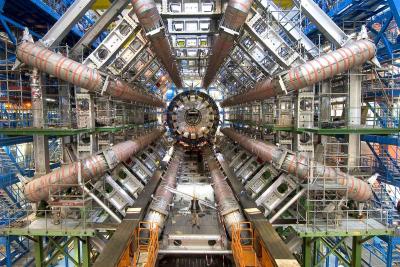Topic: SCIENCE - on August 13, 2016 at 12:45:00 PM CEST
LHC-style supercolliders are entering a make or break phase
As the Large Hadron Collider's first sign of a superparticle melts away, physicists must contemplate their nightmare scenario.
Particle physics finds itself in testing times. This branch of science aims to describe the universe by pulling it apart into its most fundamental building blocks, or particles, and putting them back together in a way that explains how everything works. Its most robust attempt to do this, the standard model, explains the subatomic world to incredible precision – but it falls short in some big ways, lacking the parts to explain gravity and the mysterious realms of dark matter and dark energy. Theories such as supersymmetry, and on extra dimensions and new forces of nature, seek to provide the missing pieces. Almost all of these predict new particles that mighty accelerator the Large Hadron Collider at CERN near Geneva, Switzerland, is powerful enough to discover. The anticipation of finding such a particle probably explains what happened when a small bump showed up in LHC data at the end of 2015. This could have been the first sign of a particle 800 times heavier than a proton that could fit the predictions of supersymmetry. A flood of more than 500 theory papers followed in an attempt to explain it. But after adding the data taken at the LHC so far in 2016, the bump went away. The 2015 signal was just noise after all.

... Comment










